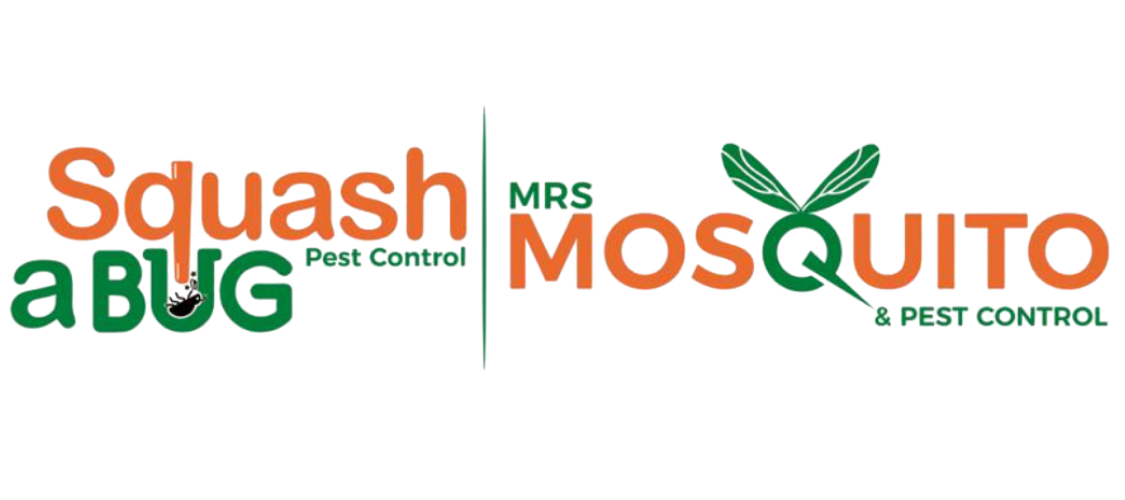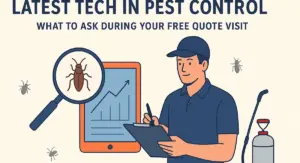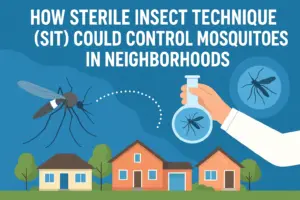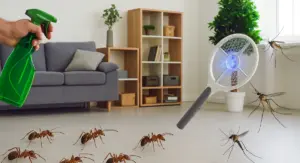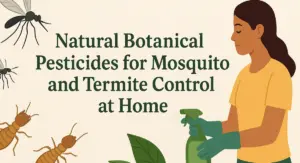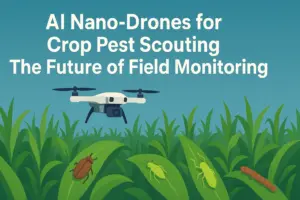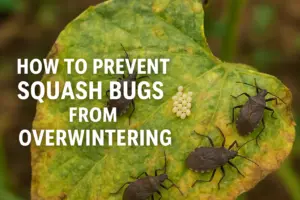Maintaining a pest-free property in Georgia and Florida can feel like a juggling act. Warm temperatures, high humidity, and seasonal rains create an ideal environment for insects and rodents. A smart, well-timed treatment plan helps avoid infestations and costly damage. This guide lays out a year-round pest control calendar tailored for these states, with clear action points for every season.
Spring (March – May)
1. Early Spring: Wake-Up Checks
- Ants & Termites
As temperatures climb, ants and termites become active. Inspect foundations, patios, and door frames for mud tubes or worker trails. - Mosquitoes
Begin looking for standing water in gutters, plant pots, and drains. Even small pools can breed mosquitoes. - Rodents
Check for gnaw marks near foundations or storage areas. Spring is peak time for rodent movement.
2. Mid-Spring: Barrier Treatments
- Perimeter Sprays
Apply targeted insecticide around building exteriors to keep pests out. - Vegetation Maintenance
Trim bushes and mow grass. Overgrowth creates hiding spots for bugs and critters. - Mosquito Larvicide
Treat water features like fountains and birdbaths to prevent mosquito larvae from taking hold.
3. Late Spring: Inside & Around the Home
- Crawl Space
Seal cracks and gaps to block entry. - Indoor Inspection
Look behind cabinets and appliances for signs of cockroaches or ants. - Follow-Up
Apply products again where pests are spotted.
Summer (June – August)
1. Early Summer: High-Risk Pests
- Termites
Swarmers often appear on warm, humid days. Keep stations baited and monitored. - Mosquitoes
With thunderstorms common, treat standing water weekly. - Ants & Spiders
Keep mulch and foliage trimmed. Both favor damp environments.
2. Peak Summer: Consistent Monitoring
- Garden Pests
Caterpillars, aphids, and scale can harm plants. Use targeted sprays or natural predators. - Stinging Insects
Wasps and hornets build nests fast. Treat early nests before they grow large. - Rodents
With food outside (picnic trash, pet bowls), rodents gravitate toward human spaces. Install traps near entry points.
3. End of Summer: Prep for Fall
- Roof & Attics
Inspect for termite damage or wasp nests. - Exterior Re-treatment
Siding, windows, and foundation may need additional barrier treatments. - Yard Cleanup
Remove debris and dead wood that shelter pests.
Autumn (September – November)
1. Early Fall: Migration Season
- Roaches & Crickets
Cooler nights drive these insects indoors. Seal openings where pipes or wires enter walls. - Rodents
They start seeking warmth. Set snap or glue traps in garages and basements. - Spiders
They follow prey indoors. Clear spider webs and treat around windows and eaves.
2. Mid-Fall: Focus on Entry Points
- Door Sweeps & Screens
Replace worn weatherstripping and repair torn screens. - Attic Inspections
Look for droppings or nesting materials. - Portuguese Millipedes
These inch-long pests often invade homes in groups. Vacuum them and treat entry areas.
3. Late Fall: Final Outdoor Blitz
- Perimeter Treatment
Another barrier spray around foundation and crawl spaces. - Leaf Removal
Clear leaves from gutters and around the house. Damp piles harbor insects. - Rodent Baiting
Use secure stations inside and outside to intercept rodents before winter.
Winter (December – February)
1. Early Winter: Maintenance Phase
- Rodent Prevention
Check traps and bait stations weekly. - Moisture Control
Use dehumidifiers in basements and crawl spaces. Dry air discourages pests. - Termite Baiting
Monitor stations every 1–2 months and refill as needed.
2. Mid-Winter: Indoor Focus
- Structural Inspection
Look for water damage that creates pest habitats (rotting wood draws termites). - Pantry Pests
Vacuum pantry shelves. Look for weevils or moths in grain, flour, or cereal. Seal food containers. - Winter Egg-Layers
Some spiders and beetles lay eggs indoors. Vacuum webs, crevices, and corners.
3. Late Winter: Prep for Spring
- Exterior Inspection
Look for damaged screens, peeling paint, or gaps. - Roof & Shingles
Replace cracked shingles that invite moisture and pests. - Plan Ahead
Order supplies and schedule pest control services before spring heat hits.
Pest Calendar Snapshot
March–May: Inspection & perimeter defense – ants, termites, mosquitoes, rodents
June–August: Active control & garden care – mosquitoes, stinging insects, rodents
September–November: Entry seal-up & fall cleanup – rodents, crickets, millipedes
December–February: Indoor maintenance – pantry pests, rodents, termites
Smart Tips for Year-Round Protection
Monitor and React Quickly
Check pest stations monthly. Look for insect trails, droppings, shed skins.
Use Integrated Pest Management (IPM)
Combine non-chemical methods (traps, exclusion, sanitation) with low-impact products.
Customize Treatments by Zone
- Perimeter protection guards the entire structure.
- Interior spots like kitchens and garages need targeted attention.
- Crawl spaces and attics act as buffer zones, keep them sealed and dry.
Keep Records
Note treatment dates and pest activity. It helps identify patterns and timing for next year.
Climate Factors in GA & FL
Warmth & High Humidity
Southern climates let pests thrive year-round. Mosquitoes and ants can breed through winter.
Heavy Rainfall
Frequent storms, especially in summer, create ample breeding water. Eliminate puddles and treat ponds weekly.
Coastal Salt Influence
Along the coast, salt air speeds up rust and wood decay. Termites find weakened wood easier to enter. Schedule more frequent termite inspections.
Chemical Safety & Product Rotation
- Rotate between product families (neonicotinoids, pyrethroids, insect growth regulators) to avoid pesticide resistance.
- Choose botanical or borate-based products around children, pets, or food zones.
- Always read dosages, re-entry times, and mixing instructions carefully.
Services: DIY vs. Professional
| Service Type | DIY Pros | DIY Cons | Pro Benefits |
| Routine Tasks | Cost-effective for small problems | Incorrect application; short results | Licensed pest control technicians ensure safety and thoroughness |
| Termite Prevention | Basic stations can help | Incomplete coverage; no warranties | Professional termite treatments provide deeper protection |
| Mosquito Control | Foggers and larvicides are easy to use | Needs frequent application | Recurring mosquito services manage the population better |
| Rodent Control | Snap traps and foam sealants are cheap | Can miss nests or entry points | Rodent exclusion and baiting programs are more effective long-term |
What to Watch For: Common Georgia & Florida Pests
- Carpenter Ants: Hollow wooden galleries near moisture. Treat damp areas.
- Odorous House Ants: Found in kitchens. Use sweet or protein-based gel baits.
- Formosan Termites: Aggressive and destructive. Hire a termite control expert for inspection and treatment.
- Asian Citrus Psyllid: Threatens citrus trees. Monitor groves and use appropriate sprays.
- Fire Ants: Build visible dirt mounds. Apply granular baits and fire ant control products.
- Bed Bugs: Found in beds, couches, and luggage. Consider bed bug heat treatments or chemical control options.
Seasonal Checklist
Quarter 1 (Mar–May): Inspect, seal, treat exterior, and apply mosquito larvicides
Quarter 2 (Jun–Aug): Reinforce barriers, manage garden pests, watch for swarming
Quarter 3 (Sep–Nov): Seal entry points, inspect attics, refresh rodent efforts
Quarter 4 (Dec–Feb): Deep clean indoors, manage moisture, treat pantry pests
Final Thoughts
Pest control in Georgia and Florida requires planning and follow-through. This calendar helps you:
- Stay ahead of seasonal pest activity
- Adapt treatment schedules to local weather
- Know when to hire a pest control company in Georgia or Florida
- Keep records that guide future treatments
Whether you manage one home or multiple properties, regular inspections and targeted treatments protect your investment. Prevention is the first line of defense. And with the right strategy, pests don’t stand a chance.
